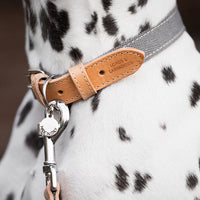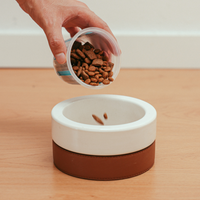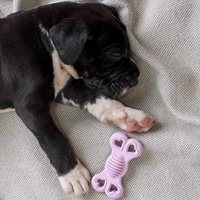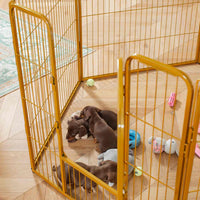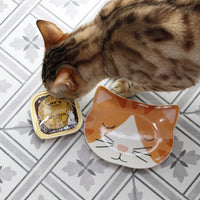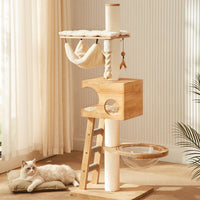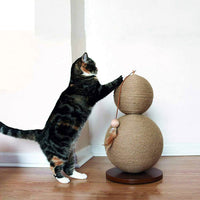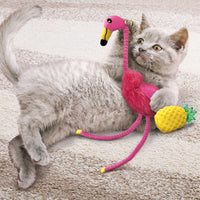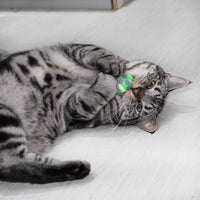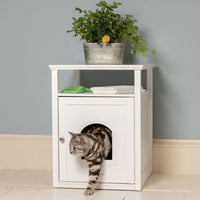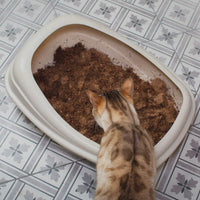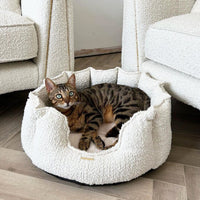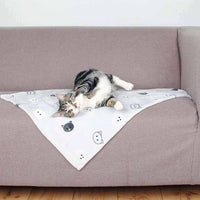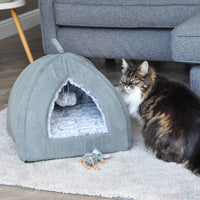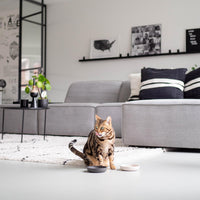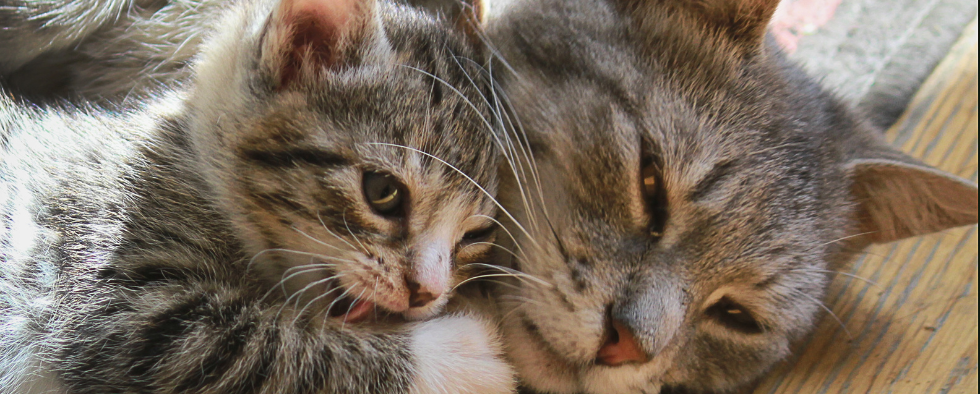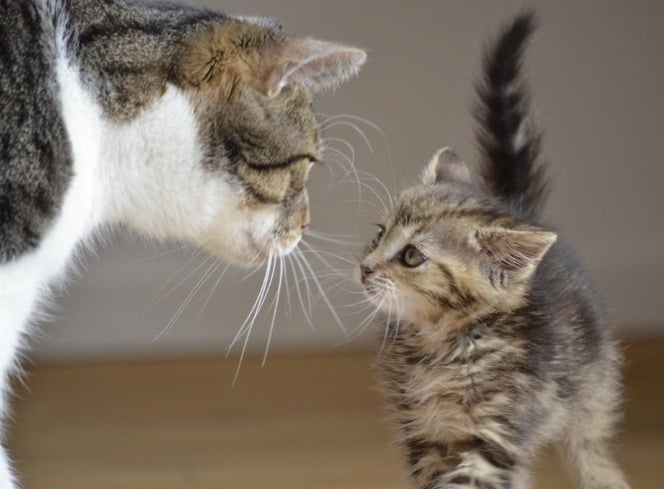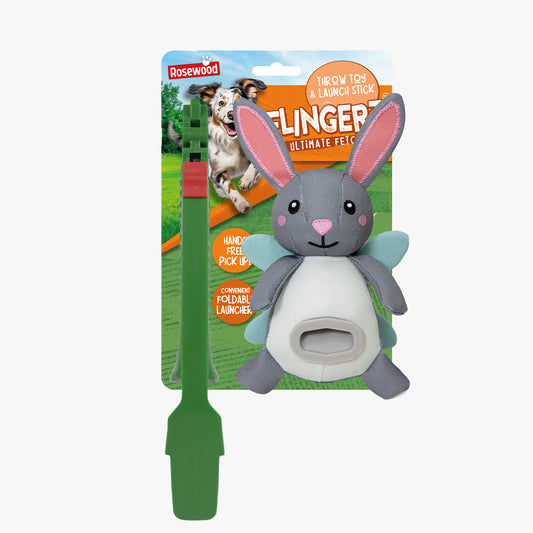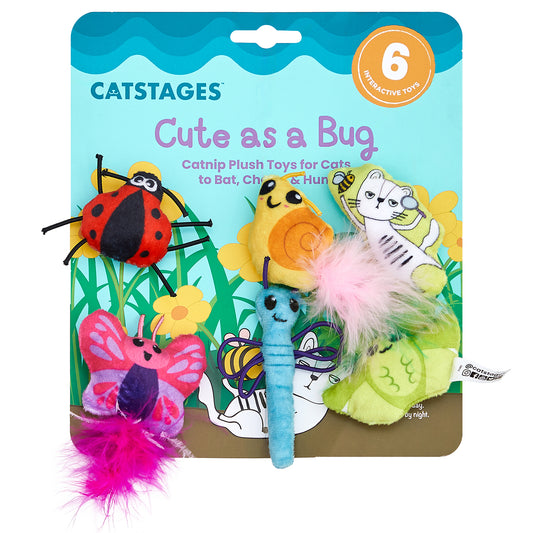Getting a new kitten is super exciting but also comes with a number of challenges, especially if you already have a feline family member. Settling in a new kitten takes some thought and planning which is only exaggerated when you’re introducing them to an existing pet. Cats are very territorial and introducing a new family member to your cat’s space can take time and perseverance. They may not like the new addition at first, but with time and patience you’ll soon all live in harmony.
People have many questions about introducing new kittens to cats and we plan to answer some of the most frequently asked queries here. Read on to find out how to introduce your new pet to the family and what to do when things aren’t going as smoothly as you’d like.
Can You Introduce A Kitten To A Cat?
The simple answer to this is yes! Of course, you can introduce kittens to cats just the same as you can introduce puppies to cats and new kittens to dogs. That doesn’t mean it will be simple and there are some things you need to consider in preparation for bringing your new kitten home. Introducing them too quickly can lead to scared cats feeling threatened which can culminate in aggressive behaviour. In this situation it’s extremely difficult to change your cats’ minds about their new family members. Instead, take it slowly and plan the introduction carefully, and hopefully the new kitten will fit right in.

How Do I Introduce My New Kitten To My Cat?
The first thing to consider is where your new kitten will live when you first bring them home. They will need their own room or area that is away from the other cat or cats that already share your home. In this area, you will need to provide everything your kitten needs including a bed, litter box, and food. They’ll also need a couple of cat toys and somewhere to scratch.
We’d also suggest investing in Feliway diffusers around the home. The Feliway Friends formula is designed especially for multi-cat households and will help to keep cats calm and relaxed.
You should allow your kitten to settle into their new home for at least a few days before you try any introductions. When it comes to the first introduction, we’d suggest doing it either side of a pet gate or other partition. You could choose to keep your kitten in their carrier so that they feel secure. A division like this will allow the cats to see and smell each other without being able to touch. Choose a place that is relatively neutral to both cats and allow cat and kitten the ability to retreat and get back to their safe space. Also, allow the cats some distance at first and let them approach the other in their own time. Don’t force the meeting or place them directly next to one another. We’d suggest providing them both some food at this point, as a distraction and to help create a positive association with the meeting.
Keep the introduction short, but repeat the meetings in this way until cat and kitten show signs that they are becoming comfortable with each other. Some cats will get used to each other in only a few days whilst others may take a few weeks. Every cat is different and it’s about seeing how your cat and kitten react to the situation.
How Do I Get A Cat To Like A New Kitten?
As we mentioned previously, the introductions should be taken slowly. There are a couple of things you can do to help get the cat to like the kitten. You could give them a scent blanket with your kitten’s scent on it and also give your kitten something with your older cat’s scent on. Do this a few weeks before the introduction and hopefully they'll be familiar with the scent helping to make them both feel at ease when they eventually meet.
Of course, your cat may not take to the kitten straight away and they may bat, hiss or growl at the kitten. This is quite normal and you shouldn’t worry too much. It just means they shouldn’t be left alone yet and the incremental introductions need to carry on a little longer. Perseverance is key here and it’s all about having patience and sticking to the plan of staged meetings.

Why Does My Cat Growl At My New Kitten?
When your cat does show signs of aggression, such as growling or hissing, they are trying to find out where they sit in the social hierarchy. New additions to the household can cause nerves and stress which can be displayed in different ways. Don’t worry too much about this behaviour, but do be aware of it. If your cat is growling or hissing at the new kitten, it just isn’t time for the two to live in the same rooms yet. Keep going with the distant introductions, with a safe barrier between, keep scent swapping and don’t give up!
How Long Will My Cat Hiss At My New Kitten?
This can really vary from cat to cat. Every pet is an individual with a unique personality; some more laid back than others. Some may not hiss at all and take to their family member in a couple of days, whilst others may show signs of aggression for a few weeks. All you can do is wait to find out how you and your cats get on together and react accordingly.
When you do start to open up the house to the kitten, start with one room at a time so that you can judge how both pets react to each other. Once they are living harmoniously, you can begin to open up more of the house, until your little kitten is fully integrated into the home.










